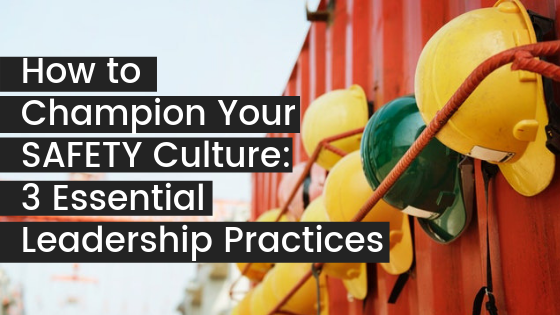As much as a team needs to drive the culture they want to create, and the safety culture they want to promote, as a leader you need to be proactive with some essential leadership practices to help solidify the team’s culture.
Consistency & Predictability
One of the highlights for me to getting home after a trip away is knowing that the minute I walk in the door, I’m going to be knocked over by an over-excited Labradoodle and be smothered with licks.
As leaders, if you want to trigger a similar (but perhaps more muted!) reaction to coming to work, you need to be as consistent and predictable as a Labradoodle. Your team needs to know exactly what behaviour to expect from you to create the safety and security of a team that operates with no hidden or unconscious barriers.
A high performing safety culture needs to know what to expect from everyone who is part of it.
Walking the Talk
Richie McCaw talked about the concept of ‘bone-deep, not skin deep commitment’ in his autobiography. As leaders, it’s all very well having expectations from our team, but if we’re not modelling the behaviour we want from them, it won’t happen as a collective unit. We want our teams to bring their best selves to work, to give their best efforts and energy and to hit the targets that the company has in terms of productivity and performance.
It’s very easy however to hide away in an office and not be visibly demonstrating what that best version of self may be.
One of the sites I work with use Gemba walks as a leadership practice. The Gemba walk is part of the Lean management philosophy and its initial purpose is to allow leaders to observe the actual work process, engage with employees, gain knowledge about the work process and explore opportunities for continuous improvement. By doing this, the leaders are far more present, available and aware of what is going on on the floor. It’s also a sign of respect to those on the floor and gives the leader the opportunity to be promoting the desired culture they want to see.
A high performing safety culture needs visibility and exposure to everyone involved in it.
Give a Platform
The concept of choice is an empowering one. Once people know they have far more choice in how they choose to think, feel and show up, they gain power.
When people are given both a say and a choice, they light up. During swim squads, I could see my sons and the other young swimmers suddenly switch on and engage when the instructor announced time for ‘your choice laps.’ They got to choose what stroke they would use for the next 4 laps. Those laps were always the most energetic from every one of them.
The specialists in your business are the ones that do the work ground up. Yet they’re often the ones who are just told what is going to happen, and not consulted. You have nothing to lose to hold a forum where you get the input of key employees on a decision or project. As long as you set it up as a debate, there won’t be disappointment if you don’t go ahead with their preferred action, but what you will get in return for allowing them to give their expertise is buy in to whatever decision you end up taking. Give your experts the platform to suggest the stroke they would choose. The additional benefit is that you will no doubt learn something new from them too.
A high performing safety culture needs to have a voice.


